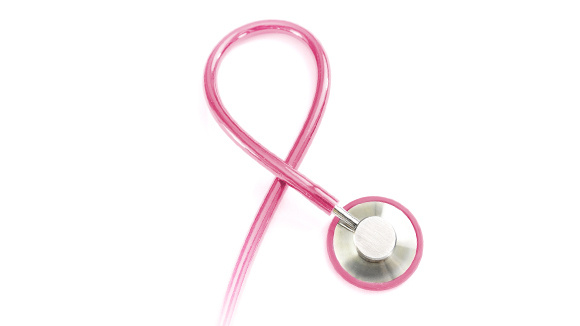
PROGRAMS:
I. Breast Cancer:

Lay Health Advisors (LHA) Program in Mid-Western U.S.
In 2009-13, with funding support of Susan G. Komen for the Cure, Mid-Michigan Affiliate, HAAP reduce the health disparity for the under served and uninsured Asian American population in Washtenaw County and Lansing area, Michigan. Asian American women have the lowest breast cancer screening rates and much higher mortality rates due to late detection compared to all other ethnic groups. Using evidence-based approaches, HAAP delivered language specific and culturally appropriate breast health information more than 1,500 Asian American women, and provided clinical breast exams and facilitate access to mammograms and follow-up care.
The project activities included following strategies: a) Conducting educational seminars in collaboration with community partners; b) Recertifying existing and training new Lay Health Advisors (LHA) for promoting breast health and screening within AA communities; c) Providing clinical breast exams and training on breast exams; d) Collaborating with existing BCCCP-contracted clinics for uninsured women to enroll into the program and provide assistance as needed; e) Providing support and follow-ups for insured women to schedule mammograms with their providers to ensure that proper screening is completed in a timely manner.
Click here for more pictures (Need PDF reader)

LHA Program in China & Taiwan
Project title: “Take care of self and help others”: Breast health and breast cancer screening in China and Taiwan
With the funding from Susan G. Komen Headquarter, HAAP implemented an international project to increase breast health awareness and access to detection of breast cancer through trained lay health advisors in underserved areas throughout China and Taiwan. Using the effective Lay Health Advisor (LHA) Model, the HAAP successfully accomplished following milestones in 2012-13:
1. Implemented and evaluate LHA training programs in Shanghai, Xi’An, and Taiwan,
2. Train 1253 LHAs (n=134 cancer survivors; n=83 volunteers, and 36= family/friends of survivors) as community change agents in breast cancer awareness and screening promotion,
3. Train more than 400 local health professionals in clinical breast examination (CBE),
4. Provide breast health education and breast cancer screening to 7932 and 5828 Chinese and Taiwanese women.
Background:
The incidence rates of breast cancer continues to rise in China; the most recent data from the National Central Cancer Registry of China ranked breast cancer number one in all cancer cites (42 per 100,000) and sixth in mortality (6.9 per 100,000) among all cancer in female populations. A comparison of epidemiologic data revealed a significance increase in breast cancer incidence of 470,000 and mortality 130,000 between 200 and 2005.
Despite the alarming statistics, cancer control and early detection is still in primitive stage in China because of general lack of public awareness and absence of standard protocols among health care providers in screening and prevention strategies.
The current HAAP program was successfully implemented in Shanghai and Xi’An; with evidence-based strategies that incorporate into current public health infrastructures in China, more than 120,000 Chinese women benefited from current study.
Click here to Watch video 1 - HAAP: Implementation of Breast Cancer Prevention in China or Click here if you are in China/Taiwan
Click here to Watch video 2 - HAAP: Implementation of Breast Cancer Prevention in China or Click here if you are in China/Taiwan
Click here to Watch video 3 - HAAP: Implementation of Breast Cancer Prevention in China 2012-2018
Evidence-based Strategies for Early Detection of Breast Cancer in China
Physician video 1: overview of physician intervention, please click here
Physician video 2: case study #2, please click here
Physician video 3: case study #3, please click here
Individually-Tailored Intervention to Promote Mammography Screening
Funded by the National Institute of Health/National Cancer Institute, this innovative research study (5R21CA127825-02) developed and tested the feasibility of using individually tailored theoretically-based intervention strategies to promote mammography screening among non-adherent Chinese-American women. During the project period, the following goals were accomplished: 1) Develop a tailored telephone counseling intervention to demonstrate its feasibility and acceptability by Chinese American women, and 2) Evaluate the intervention efficacy in increasing the a) outcome measures, i.e., uptake of mammography screening and stage of mammography adoption, and b) positive changes in mediators, i.e., improved knowledge about breast cancer risk and screening guidelines, increased perceived benefits and self-efficacy, and decreased barriers. Chinese American women who meet the eligibility criteria were randomized into tailored telephone intervention, or control condition. The tailored group received an individually tailored intervention based on the results of the baseline assessment, and the control group received a pamphlet on mammography screening. The intervention group had increased screening to 40% compared with 33% for the control group at 4 months; the difference was not statistically significant. When the subanalyses were performed, the intervention is effective in certain demographic groups (ie, elderly women aged ≥65 years and recent immigrants). The study intervention was well accepted by participants and perceived as feasible and culturally appropriate based on process evaluation.

Cultural Beliefs and Cancer Screening (CBCS) Study:
This NCI-R03 study established the psychometric properties of a Chinese-English "Cultural Beliefs and Cancer Screening (CBCS)" questionnaire that measures the full range of concepts derived from prior empirical and promising theoretical work. Guided by culturally-specific adaptations made to the health belief model (HBM) with adaptation of existing instruments when necessary (e.g., Champion’s Breast Cancer Screening Belief Scales and Mood’s Cultural Affiliation Scale), CBCS questionnaire used culturally appropriate qualitative and quantitative research to evaluate the adequacy of study variables in the CBCS questionnaire as predictors of mammography use among Chinese Americans. Lower utilization of breast cancer screening is probably responsible for a greater proportion of tumors found at a later stage among Chinese American women compared to U.S. white women. The CBCS questionnaire facilitates the development future intervention programs in increasing the use of mammography screening. The CBCS questionnaire was also been adopted by several researchers that were interested to use this tool for other minority populations to measure cultural beliefs about cancer and cancer screening practices.
II. Colorectal Cancer:

Michigan Colorectal Cancer Screening Program (MCRCSP):
Funded by Michigan Department of Community Health, HAAP has shown that it is feasible to collaborate with one of the state’s large medical systems (i.e., University of Michigan) and community-based organizations to promote colorectal cancer screening in underserved Asian communities in Michigan. Prior long-term collaborations with a UMHS physician and with community organizations contributed to our accomplishments. In 2006-8, HAAP recruited more than 400 Asian Americans to be enrolled in the MCRCSP program by and performed risk assessments. Based on the results, 10% of participants were shown to have above average risk. HAAP also arranged the high-risk participants to undergo colonoscopy.
During the project period, HAAP was able to help those patients with abnormal findings through colonoscopy has been followed by the physicians and received appropriate treatment (with one undergone the surgery). In 2007-8, HAAP completed helping 15 patients to complete colonoscopies (almost double of what HAAP served in FY2006-7), of whom 5 had polyps/adenomas. No cancers were diagnosed. The MCRCSP demonstrates a viable mechanism to reduce health disparities in colorectal screening for this underserved population.
Click here for more details about the MCRCSP Results
III. Chronic Disease:

Chronic Disease Self-Management Program:
Funded by Michigan Department of Community Health in 2007-2008, HAAP implemented evidence-based Chronic Disease Self-Management Program (developed by Stanford University Patient Education Department), also known as Personal Action toward Health (PATH) in Michigan. The implementation is one of the few in the nation that took this evidence-based program to benefit Asian Americans.
As results, HAAP was able to have four bilingual Master Trainers and certified 35 PATH leaders ((from Asian Indians, Chinese, Korean, Filipino groups)
HAAP collaborated with major Asian communities Philippine American Community Center of Michigan (PACCM) in Southfield, Korean American Cultural Center of Michigan (KACCM), Association of Chinese Americans (ACA) in Madison Heights, and the Asian Center in Grand Rapids and conducted workshops in Washtenaw, Wayne, Oakland, and Macomb counties and
Total number of Asian Americans enrolled: 138
Number of completion: 114
Gender distribution: 87 females, 37 males
Age range: 34~85 yrs
Workshop completed: Total of 10
2 Chinese groups
3 Asian Indian groups
2 Filipino groups
1 Korean group
1 mix ethnic group
IV. Mental Health:

Title: Empowering Immigrant Asian Americans: Community Participatory Approach:
Funded by W.K. Kellogg Foundation, the goals of this HAAP’s project are to promote culturally sensitive and community-led solutions and strategies toward racial healing and empower immigrant Asian American (AA) children and adolescents in achieving optimal success. The proposed multi-level project aims to: a. provide a healthy environment that creates caring and mutual understanding and promote dialogue about diversity by empowering AA children, families and communities, b. develop and implement solutions for addressing social and economic environment of inequality experienced in Asian communities, and c. foster connections and collaborations between families, schools, clinical agencies and policy.
Key strategies include: 1) empowering AA children by involving parents and significant family members and collaborating between school systems and clinical agencies and 2) promoting community-wide dialogue by implementing the awareness campaign to share the stories and voices of project participants.
The preliminary work by Healthy Asian Americans Project (HAAP) and Asian community-based organizations underscores the challenges that Asian American children and youth face. The community leaders and key informants at the end of our meetings are eager to work together for a collaborative interdisciplinary approach to reduce the discrimination and prejudice that afflict Asian Americans (who are often misperceived to be immune from the negative effects of racism) and empower the AA children and youth toward a healthy and successful life.
Preliminary Results
In 2012-13, HAAP conducted focused groups with community leaders from Asian Indian, Chinese, Filipino, Korean and Vietnamese communities and completed implementation of the pilot intervention with 15 dyads (immigrant children and their parents). At the beginning, the project team felt the resistance and reluctance when the team brought up terms like “race” and “racism,” however, when we deep dive and built relationships with the participants, there were several forms of micro-aggressions reported. In particular, micro-invalidations from the statements such as “where are you from? “You speak such good English without accent” can be insulting and invalidating because they reflect a world view that racial/ethnic minorities are aliens in this country. Another 7-year old boy’s comment was striking, "When someone called me stupid, I felt sad." Even at such early ages (aged 7-11), these AA children experienced psychological symptoms and negative experiences in anxiety and worry such as hard to get to sleep at night, keep my mind on my schoolwork and worry about someone beating me up and saying something dumb, and worry about what other people think about me.
Click here for more details about the Preliminary Results